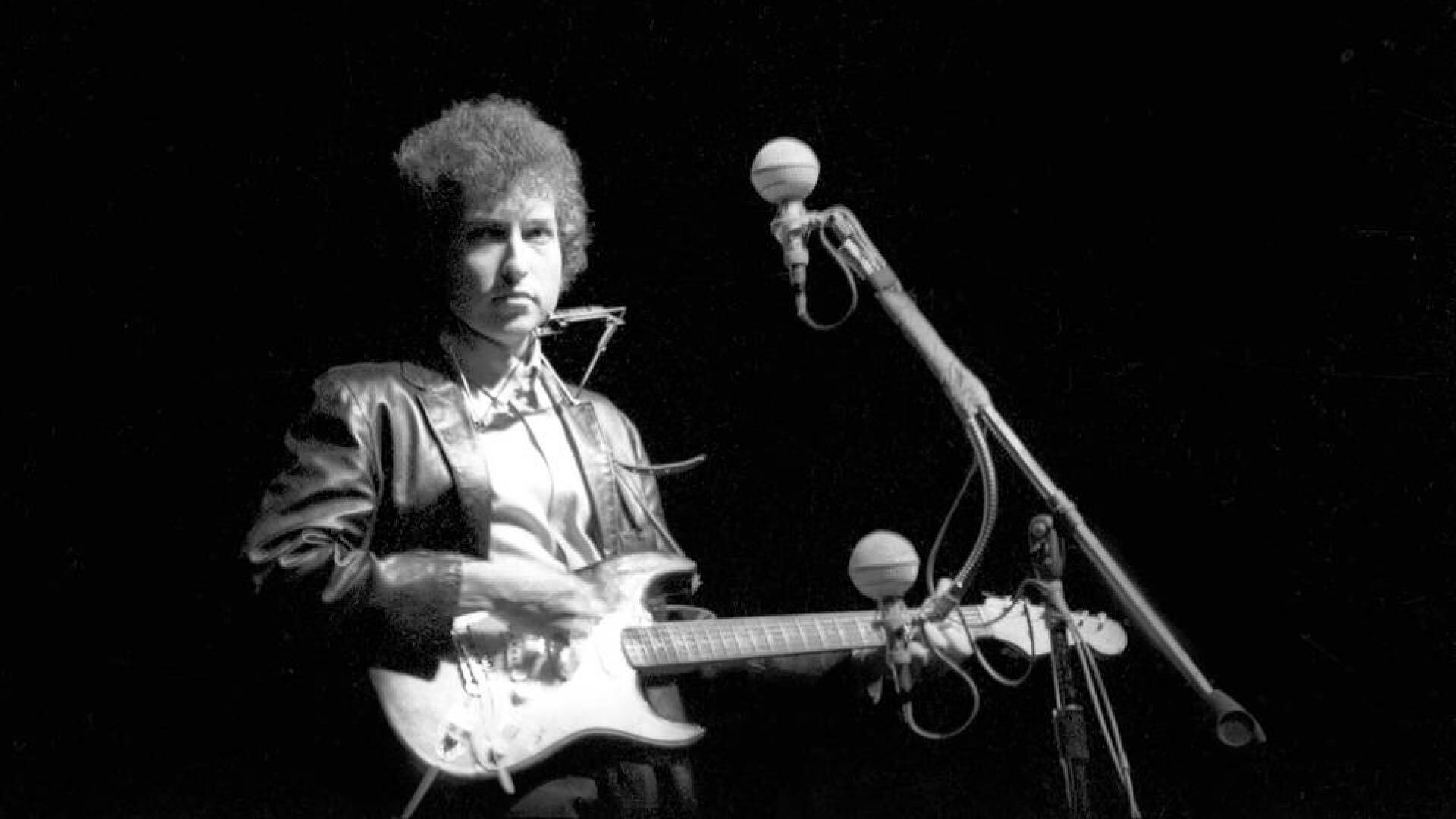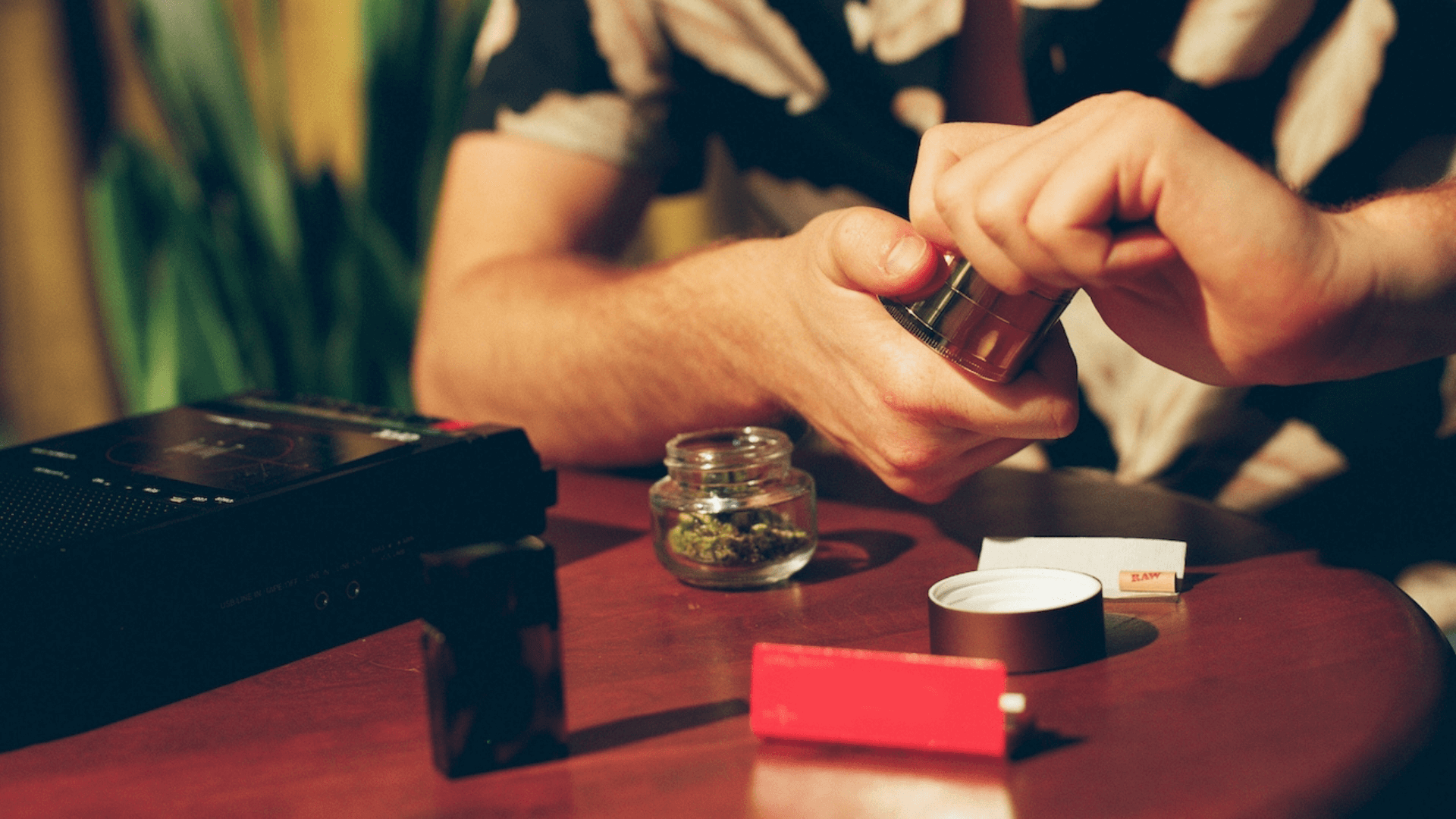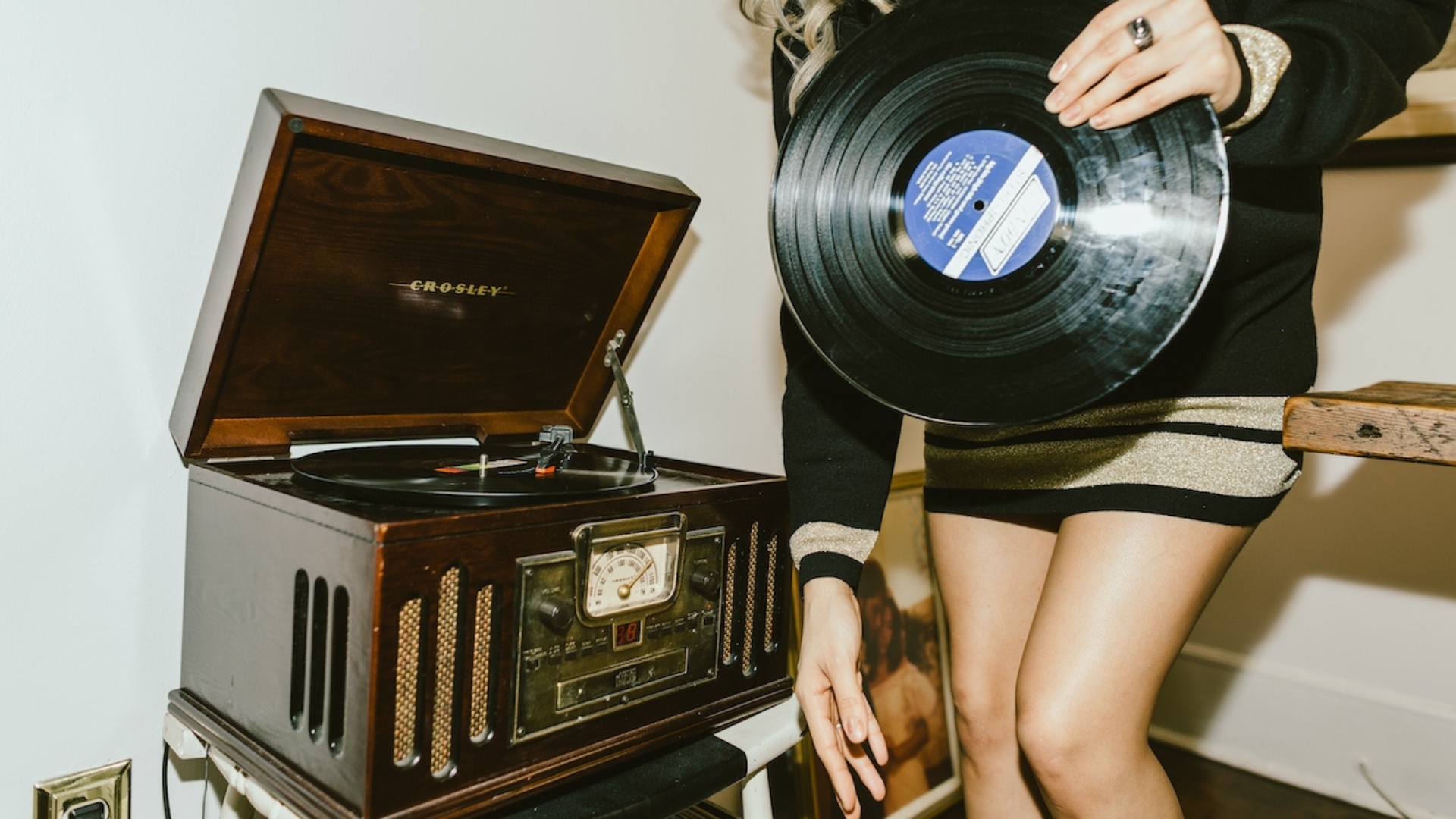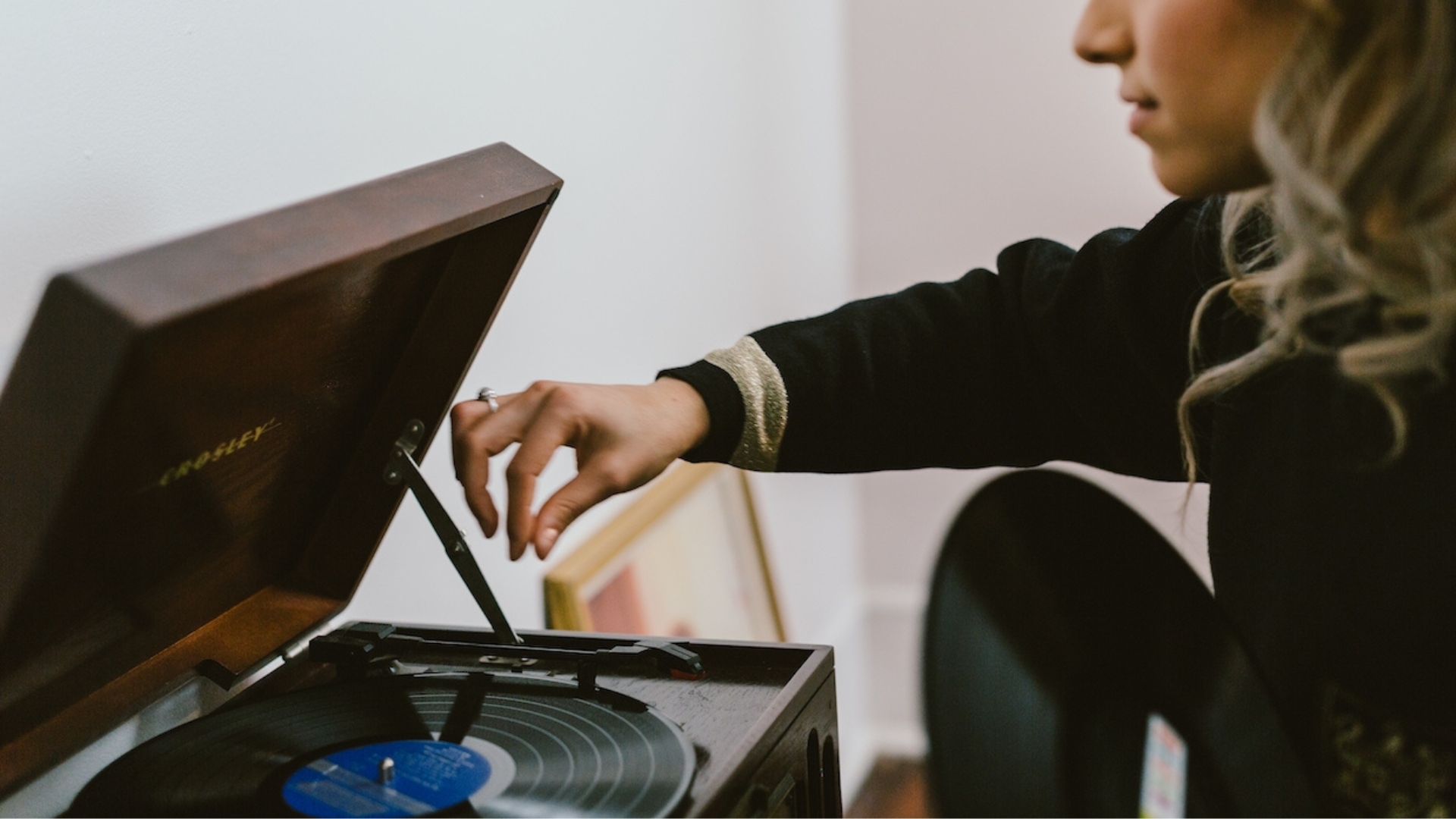You know we love to crank up the tunes when we’re smoking our favorite sungrown strains. At Humboldt Family Farms, music is a huge part of our daily lives, and there’s just something special about listening to some incredible music while working in the garden.
The connection between cannabis and music is undeniable, and we wanted to talk a bit about the history of weed and rock ‘n roll. It’s a tale of rebellion and wild vibes, kicking off in the ’50s and riffing its way through the ever-experimental ’60s and beyond.
So today, we’re diving into the connection between cannabis and rock music. It’s the story of how these two cultural champs have been jamming together for years, creating a harmony that’s as inspiring as it is unconventional.
The Rock ‘n’ Roll Revolution: A Ruckus Unheard Of
It all started back in the 1950s, an era of prim and proper, where conformity reigned supreme. And then, like a bolt of lightning, came rock ‘n’ roll. It was more than just a genre; it was a seismic cultural shift, a rebellion against the status quo, a declaration of freedom.
When those first electric guitars wailed, and those pounding drum beats echoed through the airwaves, it was as if a sonic revolution was unleashed. Chuck Berry, with his rollicking guitar licks, and Little Richard, belting out lyrics that defied convention, were like musical prophets heralding a new age.
Parents were aghast, clutching their pearls at the audacity of it all. The establishment recoiled, unable to fathom the sheer audacity of this upstart genre. This was not just music; it was a ruckus, a full-blown cultural insurrection.
And then, of course, there were the dance moves! Elvis Presley’s hips gyrating in ways deemed scandalous, forever etched in the chronicles of music history. It was a physical manifestation of the unbridled energy that rock ‘n’ roll brought to the fore.
The integration of blues, gospel, and country, and the electrification of it all, created a sound so electrifying, so rebellious, that it left an indelible mark on the fabric of society. And then, there was a whole subculture that sprang up around it. The leather jackets, the pompadours, the defiant attitude–it was a declaration of independence.
In this crucible of creativity and rebellion, cannabis found its place. It was the perfect companion to this new musical frontier. Cannabis provided an avenue to explore, to rebel, to challenge the established order. And so, in many ways, the green fuel that stoked the fires of this musical revolution.

A Defiant Act of Rebellion
One of the greatest singer-songwriters of all time—the indelible Bob Dylan—was also the rebel who defied musical norms one sultry July evening in 1965. Dylan’s electric guitar debut at the Newport Folk Festival was nothing short of revolutionary.
Here’s Dylan, a folk hero known for his acoustic serenades about peace and politics, steps onto the stage. The crowd, buzzing with anticipation, is suddenly hit with the raw, electrifying sound of his guitar. It was a bold move, a stark departure from his acoustic roots, and it sent shockwaves through the audience.
The reaction? A mix of awe and outrage. There he was, a symbol of the folk movement, strumming an electric guitar—a symbol of rock ‘n’ roll rebellion. It wasn’t just a change in sound; it was seen as a betrayal by purists who held folk music sacred. Electric guitars, back then, were associated with African-American blues and seen as a deviation from the purity of folk.
The crowd booed in protest, and still, he played on.
But why does Dylan’s electric moment still echo through history? It’s because it was more than just a shift in musical style—it was a daring act of artistic rebellion. Dylan wasn’t just playing music; he was challenging norms, defying expectations, and rewriting the rules. His performance was a declaration: art doesn’t stay still; it evolves, it provokes.
This act of defiance resonates deeply with the outlaws tending their plants in the dark of night. It’s synonymous with the spirit of the legacy cannabis cultivators who fought tooth and nail for the freedom we have today.

Cannabis: The Rebel in its Own Right
If rock ‘n’ roll was the musical rebellion that shook the foundations of convention, then cannabis was its kindred spirit in the realm of substances. In the 1950s and ’60s, while rock ‘n’ roll was causing its ruckus, cannabis was quietly but resolutely making its mark as a counter-culture icon.
As the ’60s dawned, so did a new era of experimentation, and cannabis was at the forefront as the rebel’s remedy. It became a sacrament for those seeking to expand their minds, challenge their perceptions, and explore the boundaries of consciousness. In this, it mirrored the ethos of rock ‘n’ roll, which sought to push the boundaries of music and culture.
Much like the musicians who dared to challenge the establishment with their music, cannabis users were challenging the prevailing notions of what was acceptable or permissible. It was a quiet revolution, often carried out in the shadows, but it was a revolution nonetheless.
Amid political upheaval and cultural transformation, cannabis became a symbol of protest. It was a statement, a way of saying, “We choose a different path, we reject the status quo, and we’re unafraid to question.”
Just as rock ‘n’ roll was the soundtrack of a generation’s rebellion, cannabis was the silent partner in this dance of defiance. It was a plant that dared to defy the laws, that dared to challenge the norms, and in doing so, it became a beacon for those seeking a different way.
So, as we explore the entwined history of cannabis and rock music, let’s remember that both were rebels in their own right. They were the yin and yang of a cultural revolution, each challenging the established order in its unique way.

The Psychedelic ’60s
The 1960s represented a seismic shift in culture and music, with psychedelic rock acting as the spearhead of this transformation. Icons like The Beatles, particularly with their groundbreaking album Sgt. Pepper’s Lonely Hearts Club Band, crafted soundscapes that transcended the ordinary, often inspired by and intertwined with cannabis use. John Lennon, perhaps the heaviest pot smoker in the band, often remarked that The Beatles had more than a few songs heavily influenced by weed.
In this era, musical exploration wasn’t the only focus; significant social upheavals were deeply entwined with it.
A Statement of Resistance
The backdrop of the Vietnam War and the burgeoning civil rights movement created an atmosphere of political unrest. In this climate, cannabis took on a potent symbolic role. It was not just a substance but a statement, a form of resistance against the status quo. For many young people, engaging with cannabis was akin to wearing their dissent on their sleeves, openly challenging societal norms and conventions.
The Counterculture Movement
Woodstock, the pinnacle of the counterculture, was a manifestation of the desire for peace, love, and harmony. It was a celebration of freedom, where cannabis was as ubiquitous as the music itself. Against the backdrop of the Civil Rights Act and the anti-war movement, Woodstock represented a gathering of like-minded individuals pushing for societal change. Cannabis was not just a recreational substance; it was a statement of unity and a rejection of the prevailing norms.
Jimi Hendrix, a paragon of musical innovation, often attributed his groundbreaking guitar techniques and evocative lyrics to the inspirational qualities of cannabis. “Purple Haze,” a song emblematic of Hendrix’s style, captured the essence of a generation eager to challenge societal norms. He famously said, “Please pass me the peach weed.” This era wasn’t just about music; it was deeply connected to broader cultural shifts, including the sexual revolution and the burgeoning fight for women’s rights.
Cannabis, in this context, wasn’t merely a recreational substance but a catalyst for artistic exploration and a statement of personal liberty. For these artists, and many others during this transformative period in rock history, cannabis was intertwined with a broader quest for freedom–in both artistic expression and personal life. Their music and messages continue to resonate as powerful reminders of the era’s spirit and its enduring legacy.
Weed influenced artists all over the world, but we know and love so many for their incredible passion, performances, and legendary lyrics that we feel reverberating in our bones and eardrums today. The Grateful Dead, Bob Dylan, The Doors, The Rolling Stones, Willie Nelson, and so many more are still iconic for their promotion of cannabis use.

Punk, Rebellion, and the DIY Ethos
The punk rock movement of the 1970s and 80s, with its raw energy and DIY ethos, brought a different dimension to the relationship between music and cannabis. This genre was less about the psychedelic exploration of consciousness and more about a raw, unfiltered expression of rebellion and social discontent.
Punk musicians often used cannabis as a tool to fuel their creative fires and to stand against mainstream norms. As Joey Ramone of The Ramones famously said, “To me, punk is about being an individual and going against the grain and standing up and saying ‘This is who I am.’”
Cannabis, in the punk scene, was intertwined with a broader ethos of anti-establishmentarianism. Bands like The Clash and The Sex Pistols used their music to question societal norms and political issues, and their relationship with cannabis was part of this larger narrative of resistance.
This era of punk rock showcased how cannabis could be embraced not only as a means of creative expression but also as a symbol of defiance against the status quo. The punk movement’s embrace of cannabis was less about spiritual journeys and more about a tangible, gritty form of protest, reflecting the genre’s overall ethos of raw authenticity and unapologetic self-expression.

The ’90s Grunge Movement
The early 1990s witnessed the rise of grunge, a genre born in Seattle’s rain-soaked landscape. More than just music, grunge was a cultural movement, embodying the angst and disenchantment of a generation facing new economic and societal challenges. Iconic bands like Nirvana, Pearl Jam, and Soundgarden gave voice to these feelings, with their raw, unpolished sound becoming the era’s anthems.
Kurt Cobain of Nirvana once said, “Music is first, lyrics are secondary,” yet their lyrics often reflected the pain and confusion prevalent in youth culture, with cannabis frequently featuring as a means of coping and escape.
In this era, cannabis served not just as a recreational pursuit but as a sanctuary for the disillusioned. The ’90s also saw a pivotal change in the cannabis narrative. The medical marijuana movement began to gain serious momentum, culminating in a landmark moment in 1996 when California legalized it for medical use. This shift represented a significant evolution in how cannabis was perceived, transitioning from a symbol of counterculture to a recognized medicinal aid.
This period in music history, marked by grunge’s gritty realism and the evolving conversation around cannabis, highlighted the plant’s role as both a source of comfort in times of distress and a burgeoning subject of societal reevaluation.

A Harmonious Legacy
As the new millennium dawned, cannabis continued to influence artists across various genres. Musicians like Snoop Dogg and Cypress Hill are outspoken advocates for cannabis, infusing their music with references to the plant. In this era of rapid technological advancement and globalization, cannabis became a symbol of unity in diversity, transcending geographic and cultural boundaries.
As we trace the intertwining paths of cannabis and rock music, we uncover a story of rebellion, creativity, and cultural transformation. From the birth of rock ‘n’ roll’s electrifying beats to the psychedelic ’60s and the counterculture movement, cannabis has been a silent companion, a muse for musicians, and a symbol of protest.
The evolution of both these cultural forces parallels a broader societal shift towards individuality and self-expression. Cannabis, like rock ‘n’ roll, carved out its own space in the hearts and minds of those who dared to question the norm. It became a rebel, a symbol of defiance against a world that often seemed too rigid and unyielding.
Today, as cannabis gains legal recognition in many parts of the world, we find ourselves at a crossroads of acceptance and understanding. It’s a reminder of how far we’ve come and a testament to the enduring power of rebellion and self-expression.
One thing is clear: the bond between cannabis and rock music is more than just a footnote in the annals of culture. So, as we look back at this history of rebellion and creativity, we’re reminded that sometimes, it takes a little ruckus to change the world.

